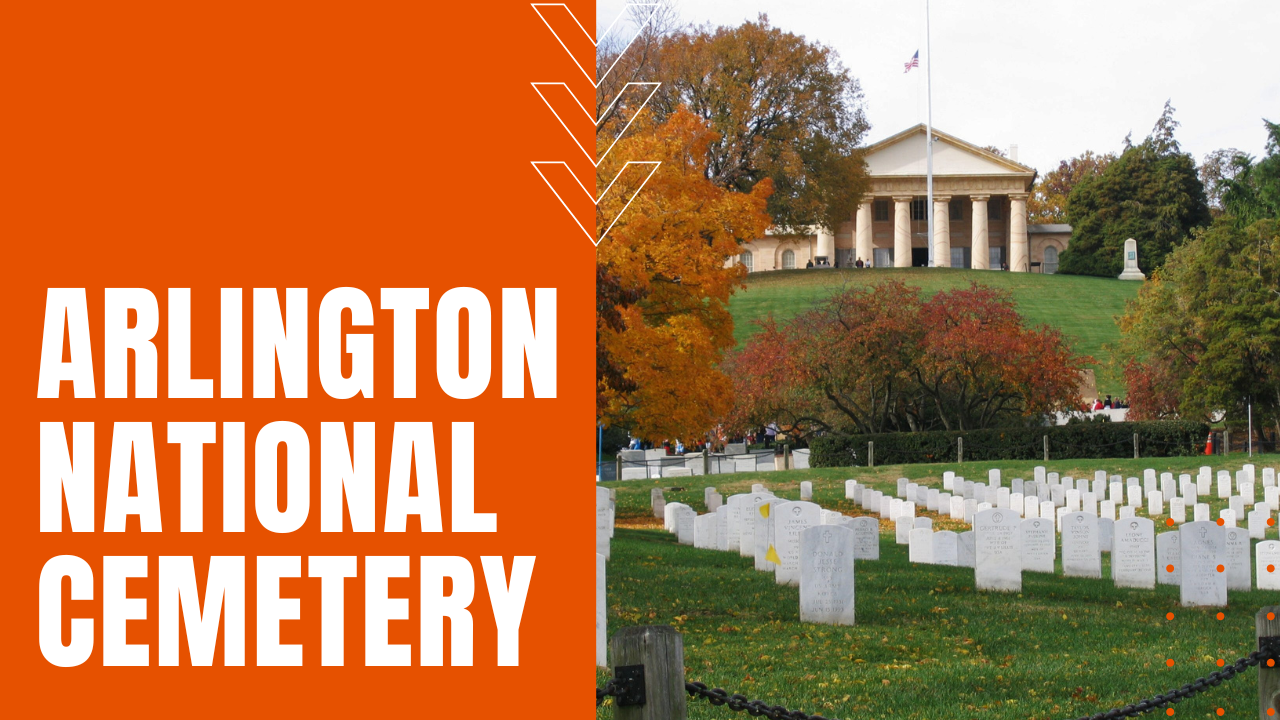Arlington National Cemetery

As Southern states began to secede from the Union as a nation hurled toward the bloodiest conflict in its history, future Confederate commanding general Robert L. Lee urged his wife, Mary Curtis Lee, to abandon the family’s 1,100-acre estate at Arlington Virginia, encouraging her to move with haste to join him at Richmond.
Modeled After Athens Temple
Modeled loosely after the Temple Hephaestus in Athens, Mary’s heart ached at the thought of leaving her beloved home, yet as she peered across the river to the yet-completed U.S. Capitol building, she entrusted her keys to Selina Gray, the most trustworthy of her slaves, following her belongings south to Richmond.
Union Encampment
Left in the care of the estate’s 196 slaves, on the early morning hours of May 24th, 1861, some 14,000 Union soldiers crossed the Potomac, establishing a village of tents at Arlington behind a long line of defensible breastworks put in place against an anticipated Confederate attack that never materialized. Following Lincoln’s 1863 Emancipation Proclamation, as newly freed slaves poured into the District, illness and overcrowding forced the U.S. government to create a sprawling Freedmen’s Village at Arlington, replete with houses, schools, churches and farmlands on which former slaves grew food for the Union’s war effort.
Purchased at a Steal
Following legal trickery by Union officials, Lee’s Arlington estate was purchased by the federal government for $26,800, far below the property’s assessed value, and as Union war dead mounted during Gen. Ulysses S. Grants 1864 Forty Days’ Campaign in the spring, Grant chose Arlington to bury a nation’s sacred dead, transitioning to Arlington National Cemetery upon the endorsement of Secretary of War Edwin M. Stanton.
400,000 of a Nation’s Fallen
Today, Arlington National Cemetery is the final resting place for over 400,000 fallen men and women, including John F. Kennedy’s Eternal Flame gravesite, which was lit by Jackie Kennedy after JFK’s 1963 assassination. Covering 624 acres of rolling, tree-covered lawns, Arlington National Cemetery receives over three million visitors a year, along with an approximate 25 daily burials of a nation’s fallen war heroes.
Honoring the Fallen
Formed in 1784, the Tomb of the Unknowns is guarded 24/7 by the most qualified members of the 3rd U.S. Infantry Regiment known as The Old Guard, while on Memorial Day each year, an American flag is placed by each tombstone of the fallen, making Arlington National Cemetery, a stark reminder than freedom isn’t free.
